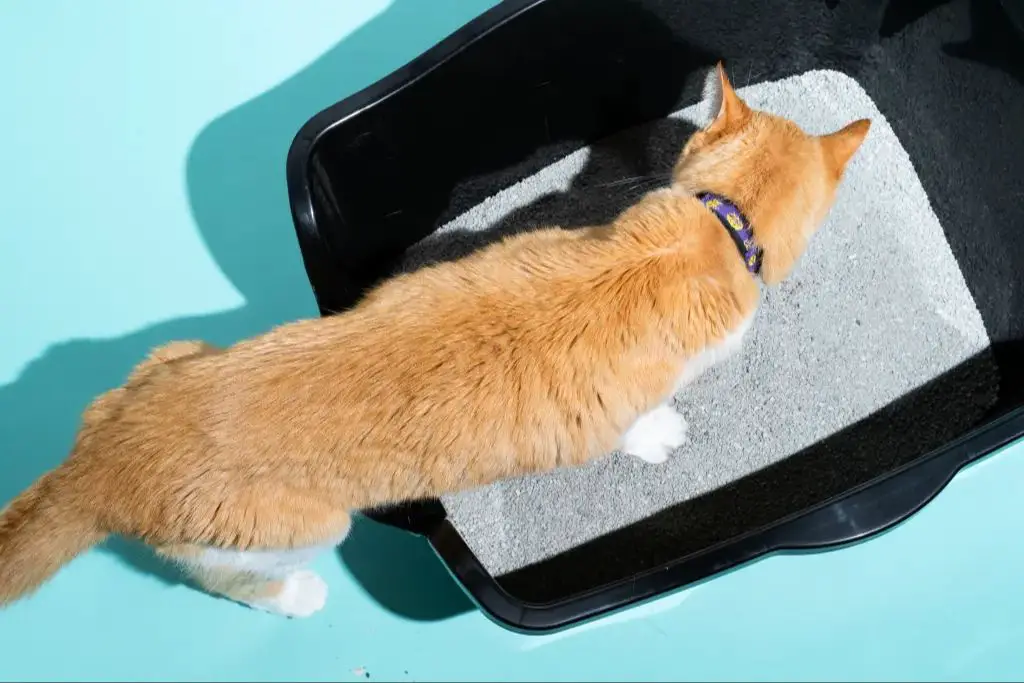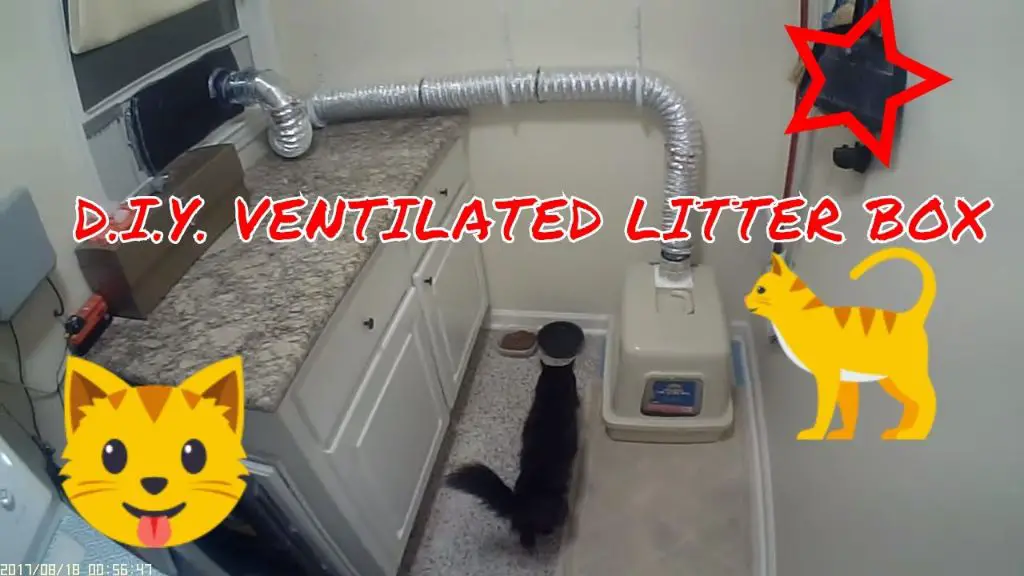The distinct and unpleasant odor wafting from the litter box is a common complaint of cat owners. That strong ammonia smell can quickly permeate a home and annoy both owners and guests. While some litter box odor is unavoidable with cats, excessive smells indicate a problem requiring attention.
In this article, we’ll explore the most common reasons behind foul-smelling litter boxes. We’ll also provide helpful tips and solutions to reduce litter box odors and keep your home smelling fresh.
Why Do Litter Boxes Smell Bad?
Cat urine contains urea, which breaks down into ammonia thanks to bacteria. This ammonia produces odors as it decomposes (1). The pH of cat urine can affect ammonia production. Urine with a high pH will contain more ammonia. Moisture also encourages bacterial growth and ammonia production. So when cat pee sits in an absorbent litter, the bacteria thrive and release more ammonia. Cats also produce waste containing sulfur compounds, contributing to litter box odors (2).
Intact male cats spray urine containing pheromones, which have a particularly strong odor. Neutering can reduce this smell. Kidney disease or infections may also cause urine with a potently foul ammonia smell (3).
Litter Box Location
The location of the litter box can significantly impact odor. Enclosed, small spaces trap smells rather than letting them dissipate. Places like inside cabinets or closets should generally be avoided. Remote locations that are out of the way also tend to delay cleaning, allowing waste to accumulate and smell to build up. Instead, the litter box should be placed in an open, convenient area that allows for air circulation.

Experts recommend keeping the litter box in a spot that feels safe and private to your cat, but is also easily accessible for regular cleaning. Some good locations are behind furniture, in a spare bathroom or laundry room, or in low-traffic areas of the home. Avoid placing it next to appliances that generate noise or heat. Also be mindful of any litter that gets tracked outside the box so you can regularly clean those areas.
For small apartments, get creative with spaces like in a bathroom sink cabinet with the door removed or beside the toilet. If needed, get a furniture piece designed to discreetly house the litter box. The key is striking a balance between finding a spot your cat will regularly use while also allowing you convenient access for scooping and cleaning.
Litter Box Cleaning
Cleaning the litter box frequently is important for controlling odors. According to veterinarians, you should scoop out feces from the litter box daily to keep odors at bay (https://time.com/shopping/article/how-often-to-clean-a-litter-box/). Removing feces daily prevents ammonia from urine and feces mixing together, which creates strong odors. Scooping daily also allows you to monitor your cat’s health by observing the feces.
In addition to daily scooping, the entire litter box should be dumped and cleaned regularly. Most experts recommend doing a full litter change once per week or every other week. However, some recommend changing clumping litter every 2-4 weeks as long as feces are scooped daily (https://www.pethealthnetwork.com/cat-health/cat-behavior/how-often-do-i-really-need-clean-my-cats-litter-box). For non-clumping litter, a full change is needed once per week. The frequency depends on factors like number of cats, litter box size, and type of litter used. In general, err on the side of more frequent litter changes to keep odors minimized.
Litter Type
The type of litter used can impact odor levels. Clumping, crystalline litters like sodium bentonite clay are very effective at trapping urine and solid wastes. The clumps can be scooped out each day, removing odors before they spread throughout the litter box. However, these litters still need to be changed frequently as odors will build up over time. Typically clumping litter should be changed every 2-4 weeks.
Natural, plant-based or paper litters are more eco-friendly options but tend to have higher odor. These litters absorb urine but do not clump tightly. Odors spread more through the loose litter. Natural litters usually require more frequent litter changes like weekly or bi-weekly. Wood pellet litters are an exception, as the pellets expand when wet and trap odors well. But urine soaked pellets still need removal daily.

In summary, clumping clay litters trap odors better initially but odor prevention requires diligent scooping and regular litter changes. Natural litters have higher baseline odor but some like wood pellets can work if cleaning routines are thorough.[1]
Litter Amount
Using the right amount of litter is important for reducing odor. Too little litter means urine and feces are more exposed, allowing smells to escape the box. The World’s Best Cat Litter recommends using 2-3 inches of litter in the box as the ideal amount. This provides enough coverage to help contain odors without using excess litter.
On the other hand, too much litter can also cause issues. Litter boxes with more than 2 inches of litter may hold in urine and fecal smells instead of absorbing them. As the Human Society notes, most cats won’t use litter that’s over 2 inches deep. So adding a lot of litter doesn’t help mask smells, and your cat likely won’t use the box.
To optimize litter odor control, aim for around 2 inches of litter in the box. This allows your cat to fully cover their waste while avoiding overfilling the box. Monitor the litter level and add more as needed to maintain 2 inches.
Air Circulation
Keeping litter boxes in enclosed spaces like basements or bathrooms can worsen smell if there is no ventilation. The box needs a way for odors to escape.
Placing the box near an open window or running an air purifier can help ventilation and air circulation. Air purifiers designed for pet odors use carbon filters or UV lights to neutralize airborne smells from the litter. Even just keeping the door open can make a difference.
Some creative solutions involve DIY ventilation systems like small fans or vents attached to the box that route air outside. A popular approach is to connect a vent tube to the box that runs outside through a window, similarly to how a clothes dryer vents air outside.

Improving airflow is a useful odor prevention tactic for any litter box location. However, boxes in tight enclosed spaces tend to need the most help staying ventilated.
Litter Box Design
The design of your cat’s litter box can influence how much odor is contained or released into your home. Covered litter boxes tend to hold smells in more than open trays. The high walls and roof trap the odors inside the box, preventing them from freely circulating into the room. This can make the inside of the box smell strongly of ammonia when you lift the lid to clean it. However, it does keep more of the odor from spreading throughout the house. Just be diligent about scooping out waste each day and washing the box weekly to prevent excessive buildup.
High-walled litter boxes are also useful for preventing litter scatter. Some cats enthusiastically kick and fling litter out of the box as they cover their waste. Boxes with tall sides can cut down on the mess. Just make sure the walls aren’t so high that they make it difficult for your cat to comfortably enter and exit the box.

Cat Health
A cat’s health can impact urine odor. According to the U.S. National Library of Medicine, underlying medical conditions like kidney disease and diabetes can increase the strength of urine odor in cats.
Kidney disease is common in older cats and can cause the kidneys to be less efficient at concentrating urine. This results in larger volumes of more dilute urine being expelled, leading to increased odor.
Diabetes can also increase urine output as the body tries to flush out excess sugar. The excess sugar in the urine of diabetic cats provides food for bacteria, increasing odor.
If a cat’s urine develops a noticeably strong or strange smell, it’s a good idea to get them checked out by a vet. The vet can run tests and determine if there are any underlying medical issues causing the increased odor.
Treating conditions like kidney disease and diabetes will help get a cat’s health back on track and can reduce smelly urine. Things like dental disease and urinary tract infections can also contribute to urine odor and need to be addressed.
Odor Removal Tips
Baking soda can be an effective odor absorber for litter boxes. Sprinkle a thin layer of baking soda at the bottom of the litter box before adding litter. The baking soda will help soak up urine odors and keep the box smelling fresher (https://www.realsimple.com/work-life/family/pets/litter-box-smell-hack). Replenish the baking soda once a week or whenever you clean out the litter box.
You can also set out small dishes or open boxes of baking soda around the litter box area to help absorb smells. Vinegar is another handy odor absorber. Place small bowls of white vinegar around the litter box area. The acetic acid in vinegar reacts with the ammonia in cat urine to neutralize odors (https://angryorange.com/blogs/news/top-7-litter-box-odor-control-solutions). Replace the vinegar every few days.
For quick odor removal, turn on air purifiers and filters in the room with the litter box to help circulate fresh air. You can also spray pet odor eliminator sprays or solutions in the area for an instant refresh.

